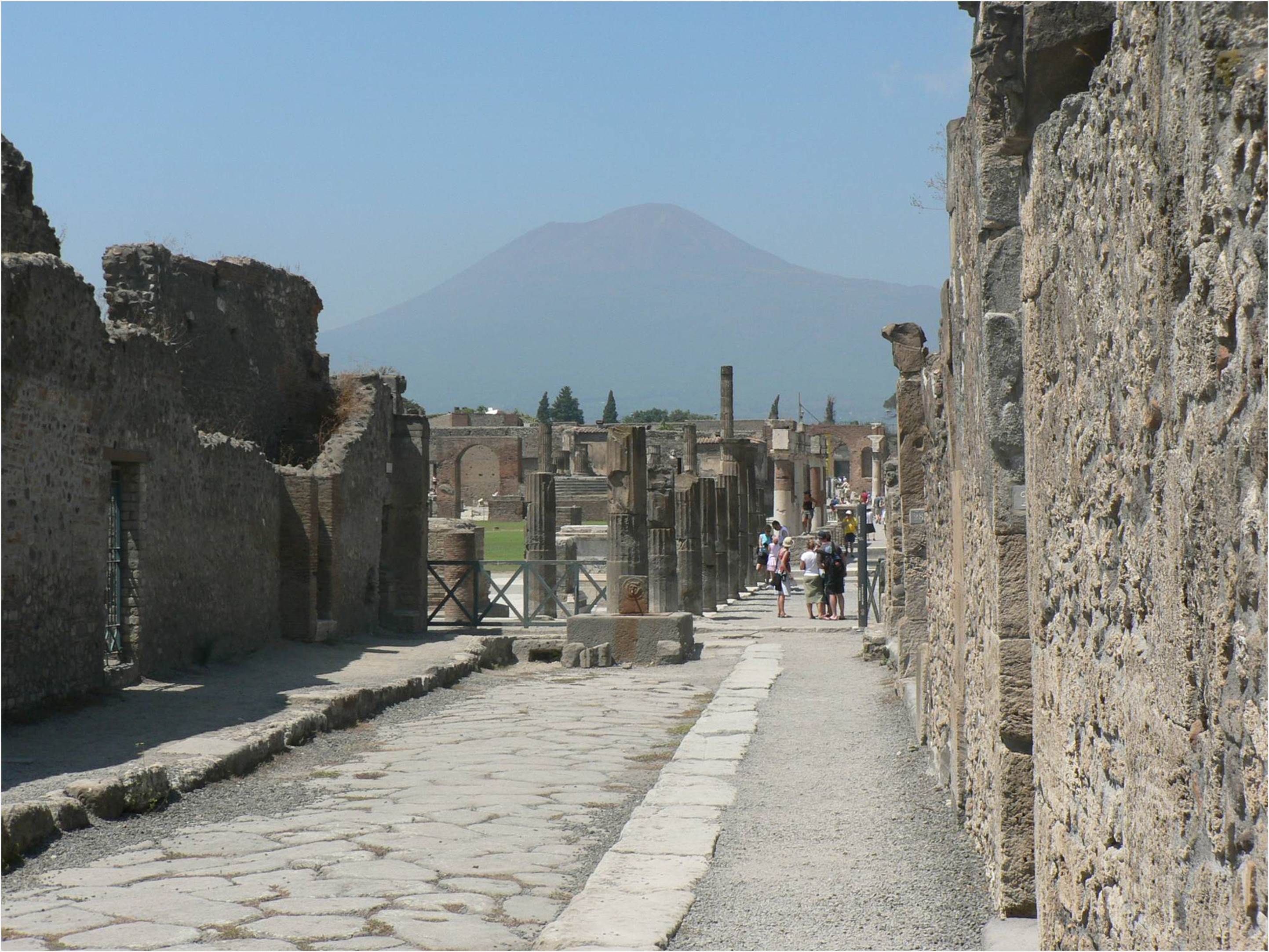Ancient Water Supply in a Dynamic Geological Environment
Abstract
This research concerns carbonate deposits from aqueducts around the Bay of Naples, principally the Aqua Augusta aqueduct, and from the town of Pompeii.
Our research seeks to determine:
- the source of the water that supplied Pompeii, and in so doing evaluate the previous studies of Ohlig (2001) and Matsui and co-workers (2009);
- whether contamination by any elements, such as tin, antimony (Charlier et al., 2017) or copper, other the known contamination from lead (Keenan-Jones et al., 2011), arose from Pompeii's lead pipe distribution system; and
- whether trace element concentrations show promise as a technique to provenance the source of the water in past water systems.
We have integrated analysis of limestone deposits (travertine or sinter) formed from the water supplied to these ports with relevant historical and archaeological data and investigated the micro-stratigraphy and trace element composition of the travertine through laser ablation inductively-coupled plasma mass spectrometry (LA -ICP-MS). Due in part to the ineffectiveness of inclusion screening procedures, the trace element concentration is heavily dependent on localized heavy metal contamination and deposition of detrital material, rather than source water composition. Trace elements are concentrated in particular inclusion-rich layers, which provide important dating information, but whose presence or absence affects overall concentrations. Hence, the trace element composition of ancient travertine deposits around the Bay of Naples is not suitable for source water provenancing, calling into serious question the results of previous studies. We will also difficulties of dating these deposits using U-Th dating.
About the Presenter
Dr Duncan Keenan-Jones is a Lecturer in Classical Archaeology at the University of Manchester. His research focuses on the relationship between environment, technology and society in the past, especially in the ancient Mediterranean and in Australia. He is particularly interested in how past and Indigenous practices can help us manage this relationship today. Duncan's research interests are focused on the intersection between Roman society, environment and technology, which he investigates using Latin and Greek texts, archaeological evidence, and geoscientific analyses of limestone deposits.
Duncan has current projects on the climate, flooding and water management in ancient Italy and floodplain management and carbon storage in Australia's channel country, as well as how Roman mortar developed and why it is so durable.
Co-Authors: Dr Glenys McGowan and Ellie Hughes (UQ), George Vazanellis and Adrian Bowman (University of Glasgow), John Hellstrom and Russell Drysdale (University of Melbourne)
About Archaeology Working Papers
The Working Papers in Archaeology seminar series provides a forum for dissemination of archaeological research and ideas amongst UQ archaeology students and staff. All students are invited to attend the series and postgraduate students, from honours upwards, are invited to present their research. The aim is to provide opportunities for students, staff and those from outside UQ, to present and discuss their work in an informal environment. It is hoped that anyone interested in current archaeological directions, both within and outside the School and University, will be able to attend and contribute to the series.
